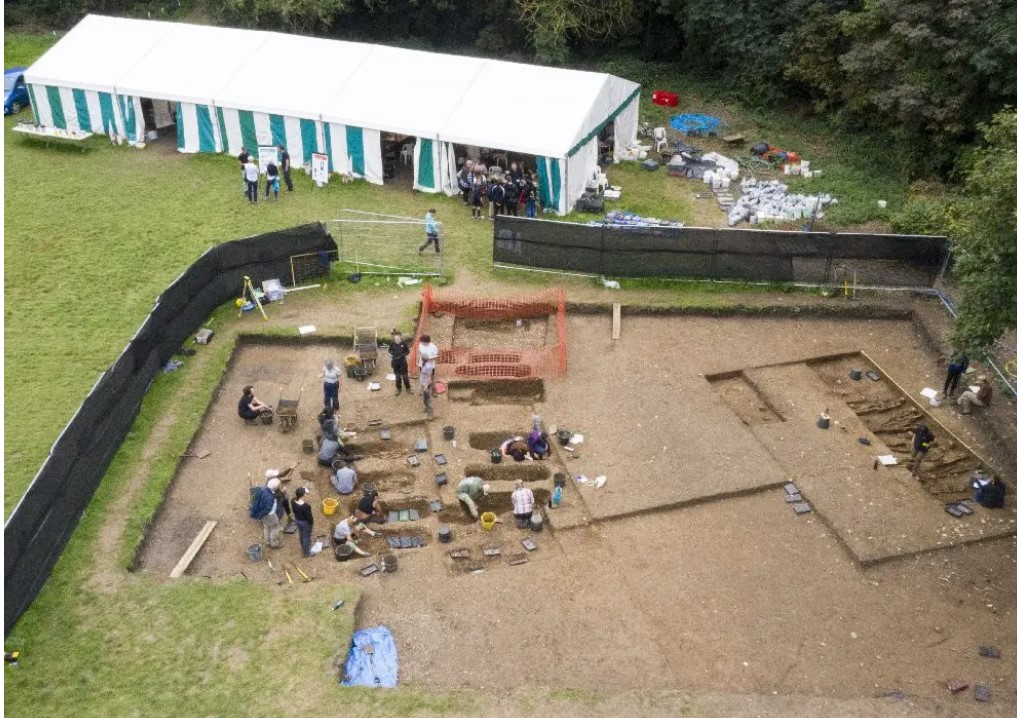Excavations Reveal Anglo-Saxon Monastery’s Role as a Social and Religious Hub at Cookham Abbey
Archaeologists from the University of Reading have been diligently excavating Cookham Abbey, situated near the Holy Trinity Church in Cookham, England. Their findings shed light on a significant timber structure within this Anglo-Saxon monastery, providing fresh insights into its multifaceted role.
The focal point of these excavations has been the discovery of a substantial timber building, a cornerstone of Cookham Abbey. This timber structure served as both a social and religious center, offering valuable glimpses into the daily life and functions of the monastery.
In addition to this prominent structure, the archaeologists unearthed a well-preserved timber barrel-lined shaft containing wooden artifacts. A walled monastic enclosure, facing the picturesque River Thames, was also revealed during the excavations. Furthermore, a cemetery containing over 50 burials spanning three generations was uncovered, painting a vivid picture of the community’s history.
Cookham Abbey’s existence was initially brought to light in 2021, with researchers dating its origins to the reign of Cynethryth, a remarkable Queen of Mercia from the 8th century AD. After the passing of her husband, King Offa, in AD 796, Cynethryth entered a religious order and eventually assumed the role of royal abbess at the monastery.
Professor Gabor Thomas of the University of Reading remarked, “The discoveries we have made at Cookham will help us paint a much clearer picture of daily life at the monastery. We will need to carry out a more detailed analysis of what we have found, but the artefacts unearthed at this year’s dig again show the exceptional quality of preservation at Cookham.”
Previous excavations have also delineated the layout of the broader complex. It appears that the monastery was structured into various functional zones, separated by distinctive ditched boundaries. These zones served different purposes, with some designated for housing and others for industrial activities, as indicated by a cluster of hearths that were likely employed for metalworking.




